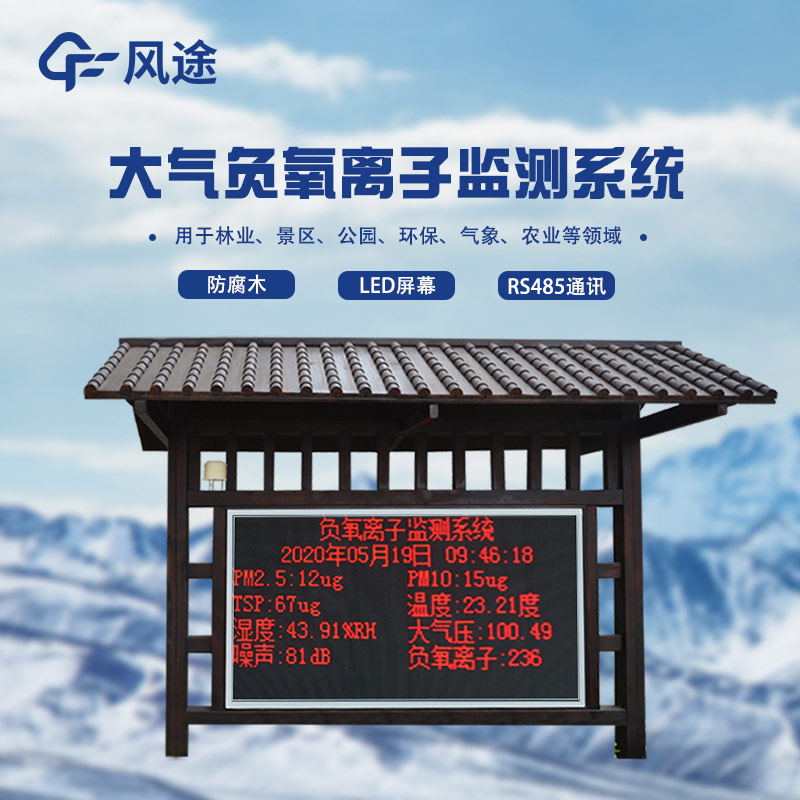Meteorological environment monitoring equipment supplier
Insist on doing high-precision customer favorite technology products
Imagine what will happen when weather is integrated into the park." The "Online Negative Oxygen Ion Detection System" visualises the surrounding environment, where the changing seasons slowly unfold, making weather forecasts audible and visible, and allowing the public to experience them for themselves.
The Online Negative Oxygen Ion Detection System is an ecological monitoring station that combines professional monitoring functions with landscape aesthetics. It adopts the design of anticorrosive wooden pavilion, which perfectly integrates the high-tech monitoring equipment with the natural landscape, and facilitates the seamless integration into urban parks, garden scenic spots, communities and other places without affecting the original environmental atmosphere. The system is equipped with professional protection measures, and can operate stably even under adverse climatic conditions.
The system is equipped with a number of LED displays, which can display monitoring data in real time from multiple angles, cyclically broadcasting various environmental parameters, providing citizens with reference information when travelling and relaxing, and enhancing the public's understanding and experience of environmental quality.
This equipment is capable of real-time data exchange with the monitoring centre to ensure immediate data updating. It is also compatible with third-party monitoring platforms and can be used as a node in a larger monitoring network. Users can customise the monitoring parameters according to their individual needs to suit a variety of monitoring requirements.
The construction of the online anion detection system follows a series of principles, including the careful selection and placement of monitoring stations to accurately reflect environmental anion concentrations, the implementation of long-term continuous monitoring methods, the use of advanced equipment and uniform monitoring and analysing methods, and the establishment of a quality control system to ensure the reliability and comparability of data. Cooperation and exchanges with environmental protection, forestry, agriculture, tourism and other departments have also been established to promote information-sharing.
